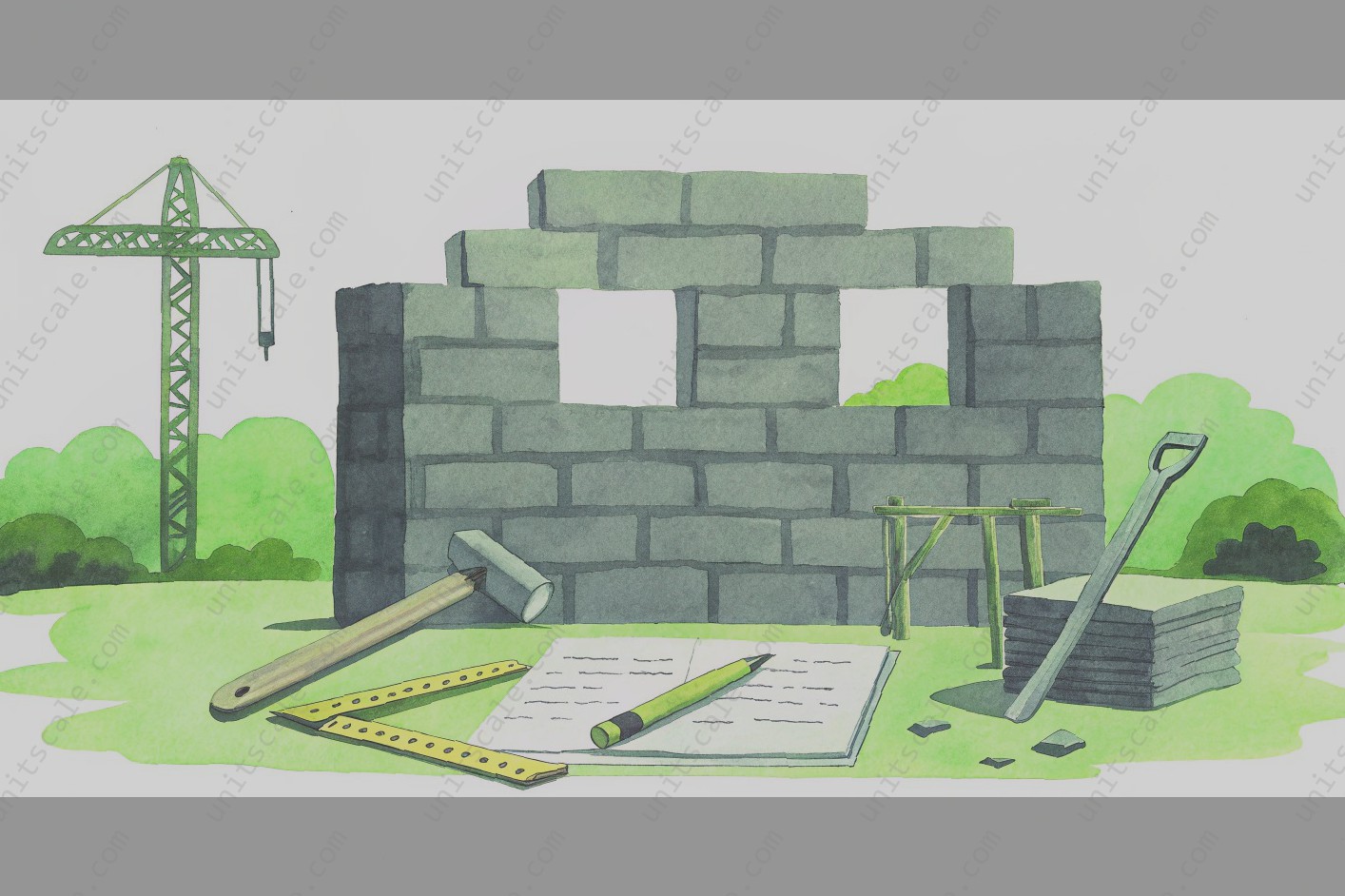The Ins and Outs of an Owner and Contractor Agreement
An owner and contractor agreement is essentially a construction contract that delineates the expectations of all parties involved in a project. These agreements establish the scope of work, the time frame for the project, and the associated costs. They also dictate how changes will be handled if they arise during the construction process. Owner and contractor agreements are important because they can help to avoid any confusion and conflicts once construction begins. A solid plan is critical to the success of a construction project. A formal agreement carries with it obligations and responsibilities that all parties are legally bound to perform.
A typical owner and contractor agreement lists the conditions and the exact work that is to be completed-based on the specificity of the contract, each party typically has a good idea of what to expect from the other. The most common type of construction agreement is a fixed-price contract. This type of contract establishes one overall price for a specific final product or result. Both parties have an interest in negotiating this fixed price because the client wants to ensure that their budget can accommodate the price and the contractor wants to make enough of a profit to fully compensate its work.
Another type of construction contract is a cost-plus contract. Because this type of contract allows for ongoing pricing, it does not set a specific price for the entire project . Owners often like to use this type of contract when they aren’t sure how much a project should realistically cost. For example, in the construction of an office park, the owner may want the contractor to change certain elements midway through the construction process. Under a fixed-price contract, these changes will come at a greater cost to the contractor. However, under a cost-plus contract, the extra costs incurred by the contractor will be handed off to the owner. Although this type of contract seems more fair to the contractor it makes it difficult for the owner to control the costs.
On a construction project, you will almost always work with an architect, but it is not uncommon for this person to also act as the project manager. The architect’s role is to design plans for the project. Owners and contractors will frequently have an architect design plans and then a separate engineer review and perfect them before submitting the final plans to the township or borough. "Value engineering" is often employed at this stage to create the most cost-effective value for the owner. Once the project is approved, building and technical plans will be sent to the contractor, who will identify the trade professionals necessary to complete the project. A general contractor or a construction manager will oversee this process.
Essential Components of an Owner and Contractor Agreement
The cornerstone of any successful construction project is the owner-contractor agreement. This critical document is the primary means by which the parties set out their respective rights and responsibilities, i.e., who is doing what, when, where and for how much. While the details of an owner-contractor agreement will vary from project to project, typically they will include: (1) a description of the work to be performed under the agreement; (2) the scope of services to be provided; (3) the time or times for the performance of the work; (4) the method of compensation and payment terms; (5) the project location (including the address and any city, county, or township regulations that must be adhered to); (6) the impact of adverse weather conditions, such as rain or snow; (7) the effect of holidays on the work; (8) the time for completion or for furnishing labor and materials; (9) the deposit and payment schedule; (10) a schedule of values; (11) progress payments; (12) change orders; (13) insurance and indemnification; (14) work stoppages (including inclement weather) and extensions of time; (15) the resolution of disputes; (16) the rights of subcontractors and suppliers; (17) the role of bonding companies; (18) breach of contract; (19) the duration of the agreement; (20) the date of final payment; (21) who, if anyone, is responsible for paying for any necessary remediation of construction defects; and (22) what happens in the event of foreclosure on the property.
Legal Requirements and What You Need to Know
While the owner and contractor agreement is at its core a legally binding document, it is also essential that the terms of the agreement conform to both state and local laws. As with any contract, the owner and contractor agreement must stipulate each party’s rights and obligations in accordance with their mutual understanding of the project.
Home improvement contracts fall within the scope of state regulations. For example, New York State adopts the Home Improvement Law to ensure consumer protection and define the scope of work and rights and obligations of homeowners and contractors. Minnesota follows suit by outlining its own specific criteria for what must be included in, or excluded from, a home improvement contract (e.g. a statement that "Design and Construction Services are not included").
In addition to statutory requirements, there are other elements of construction law that may affect the enforcement of an owner and contractor agreement. For instance, the violation of certain legal rules can preclude a contractor from recovering payment for certain work performed or from enforcing a lien against the property for which it performed work. Given the high-stakes nature of construction projects, any violations may carry serious ramifications.
Common Mistakes and How to Sidestep Them
The owner and contractor agreement is a complex, critical document that sets the terms for every successful relationship between a homeowner and builder. But it’s also the most common document that runs into trouble. As with any contract, the potential for pitfalls can depend on any number of variables. But there are some consistent mistakes that both owners and contractors need to be aware of.
The most common complaint I hear from clients when it comes to their SNDA agreements is that they just didn’t understand what they were signing. They call me looking for legal termination of their lease agreement — or trying to move landlords out of their space because they just weren’t aware of exactly what their obligations were.
One of the biggest pitfalls I see is when an owner doesn’t take the time to understand the industry-specific language in the agreement they’re signing. Owners expect that their contract specifically their agreement with a contractor, will outline all terms in plain English, but it’s often very specific. The much-disputed general conditions, for example, explicitly define the roles and responsibilities of the contractor’s various employees and other contributors.
The most common mistake I see in this context is a client who’s tried to save money by using general construction contracts (homeowner and vendor agreements); they then only review the contract on a high level (if at all). Contractors, by contrast, tend to expect that the language is clear and self-explanatory, because they do this work every day and they understand how to read it; so they most often assume that an owner has understood the terms of the agreement they are entering into .
Owners need to be knowledgeable enough to talk to contractors about the details in the contract, and contractors — and their attorneys — need to educate homeowners better about making sure they understand the contract.
Homeowners can have the best intentions, but they don’t always see the long term implications of a contract to cover something that might be needed right away. For example, an owner might want to include an additional space outside of the scope of the project, saying they’ll pay the difference, but the language in that agreement could later haunt you when the pricing is added, because it might not be clearly classified as a change order.
Homeowners also don’t always know what a "standard" contract contains. They expect that the agreement will contain language they would typically find in a retail leasing agreement, but that isn’t always the case.
In my experience, the best course of action for avoiding these problems is working with a lawyer to create a contract template that can be changed for each new property as necessary. This is especially important for contractors who might be renegotiating the same contract repeatedly for multiple properties, because each new property often varies in specification and/or complexity. That way, they can avoid some of the most common issues that arise in those situations by creating a document that addresses those potential pitfalls in advance.
The Importance of Having an Attorney Review a Contract
A comprehensive owner and contractor agreement is the backbone of any successful home renovation. Such an agreement also provides you with the legal protection you need to safeguard your interests in the event that things do not go as planned. You may believe that your contractor will be around to protect your interests, but bear in mind that the contractor’s first duty is to the subcontractors and suppliers – not you – and the contractor will not be protecting your interests.
It is essential to negotiate and draft the owner and contractor agreement carefully. It is a legal document that absorbs every word and comma you put in it, and every word and comma you leave out. For that reason alone, having a lawyer experienced in drafting and negotiating construction contracts and is indispensable. An experienced construction lawyer can help ensure the contract accurately reflects all of the issues that are important to you and satisfies your objectives and can be revised and renegotiated as the project develops. The lawyer can also help you craft contract language that properly describes the work to be done.
It’s foolish to believe that you’ll get everything you want by breaching or threatening to breach the contract. That will not protect you. Rather, you should get everything you want by negotiation via your lawyer. If something does go wrong, then your lawyer can help you obtain compensation through litigation, arbitration, or other methods. You need a lawyer who knows how to make those methods work for you, and to make them work within a specific time frame. Otherwise, things could come apart at the seams.
Case Studies: When Owners and Contractors Get it Right
The following are several case studies that I found particularly illustrative of the importance of a strong owner-contractor agreement:
Success Story #1: A Small, Two-Page Agreement. A small, two-page, standardized agreement has easily adapted to many different projects. The contract contained a detailed schedule of payments for costs and profit, but not a fixed lump sum, and problems with the subcontractors caused the contractor to incur some higher expenses. Because it was clear that the contractor and owner had a sharing of costs and profits and that the subcontractors and third parties were protected from any construction change order expenses not provided for in the owner’s budget, the contractor was not required to absorb these unanticipated expenses. Although the contractor was required to share the profits, which were not substantial, nonetheless, it was able to recoup additional costs and build goodwill with the owner. As a result of the contractor’s outstanding performance, positive advertising and goodwill, the owner is likely to become a repeat customer, rather than take the project out to bid.
Success Story #2: A Shared Profit System. In an innovative approach, the owner and contractor each put up $100K of their own money to be held in an escrow account . This amount could be tapped to cover certain events listed in the owner-contractor agreement. If unused, the money would be divided, in equal parts, in cash to the owner and the contractor, with the contractor receiving a 70% advisory fee on its share. The funds are to be replenished by the contractor if they are used. In essence, the owner and contractor have actually created a form of profit sharing for unspent funds or shared costs for extra expenses incurred by either party. There is also a provision for the owner to pay the contractor an additional negotiated fee for above normal harassment, if the owner has difficulty making a decision that is causing delays.
Success Story #3: A Personal Approach. This case involves a successful multi-party dispute between a general contractor, his trucking subcontractor, concrete subcontractor and the architect. The court determined that an informal arrangement reached between the architects and the express approval of the contract owner was sufficient to establish the architect’s oral modification of the contract. The subcontractors were allowed to recover amounts owed beyond the quantities for which they bid because there was no alteration of the contract price and no prejudice to the owner.



